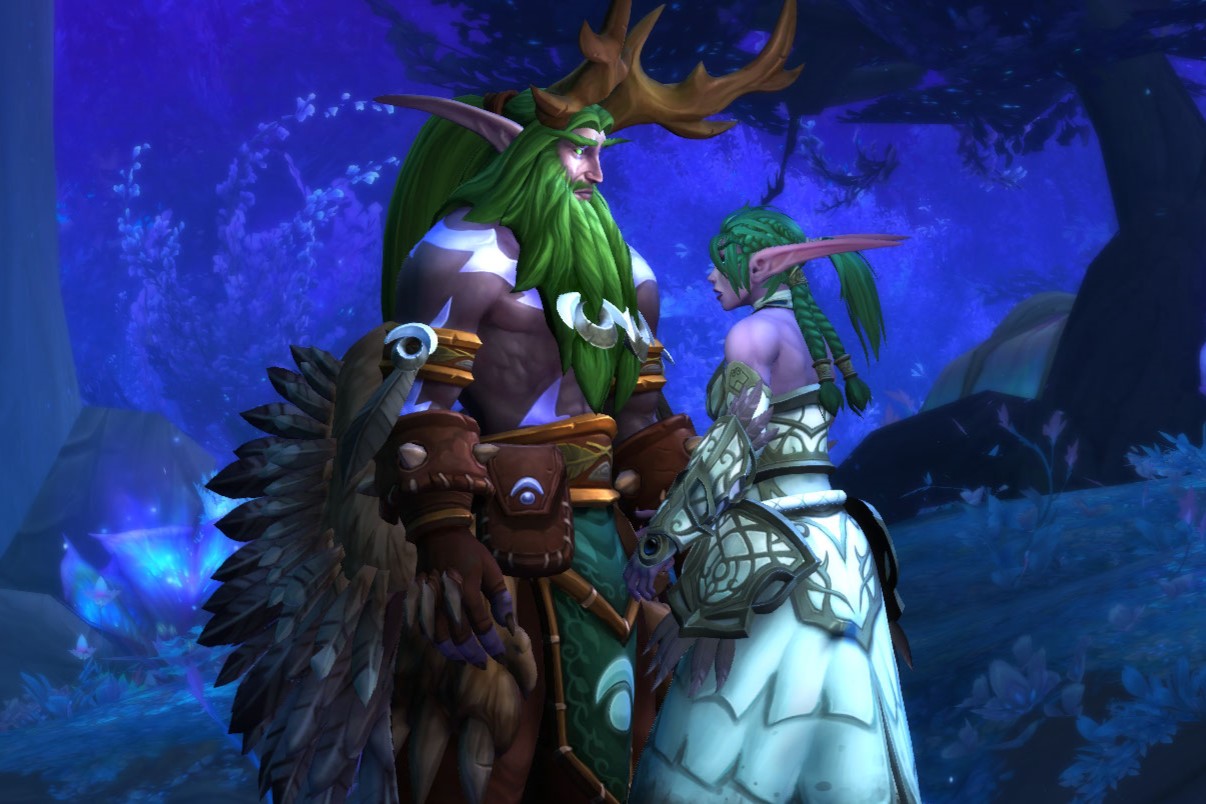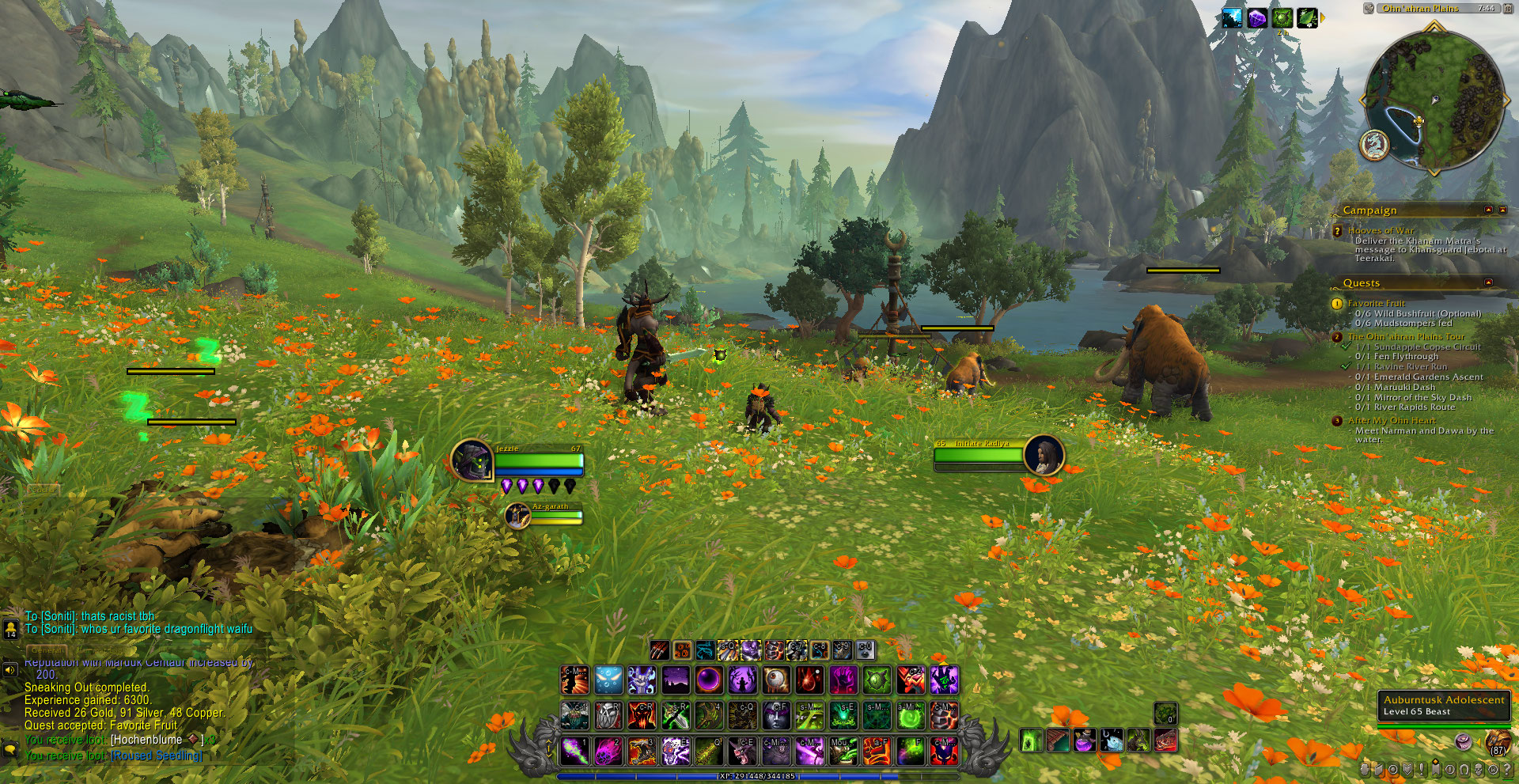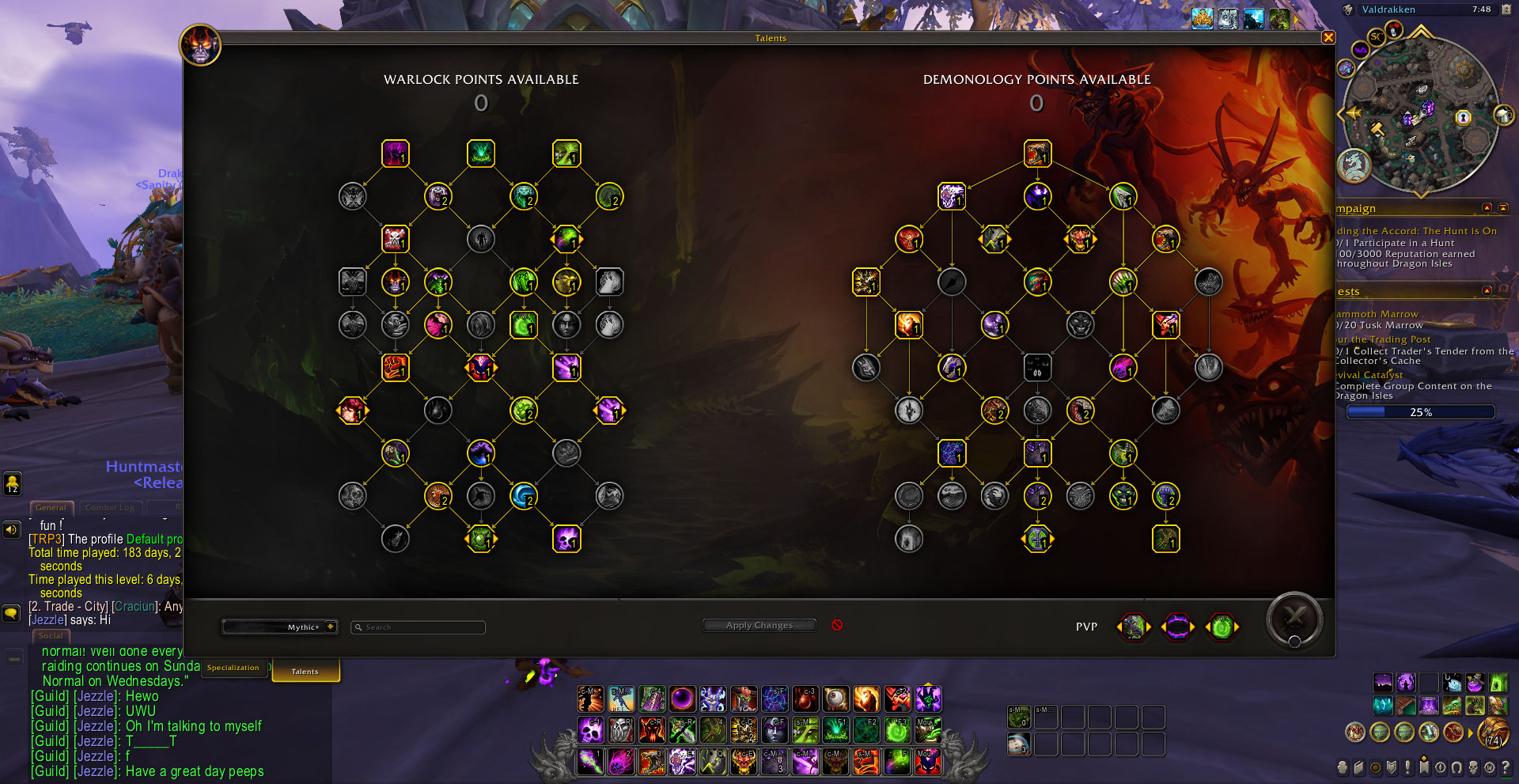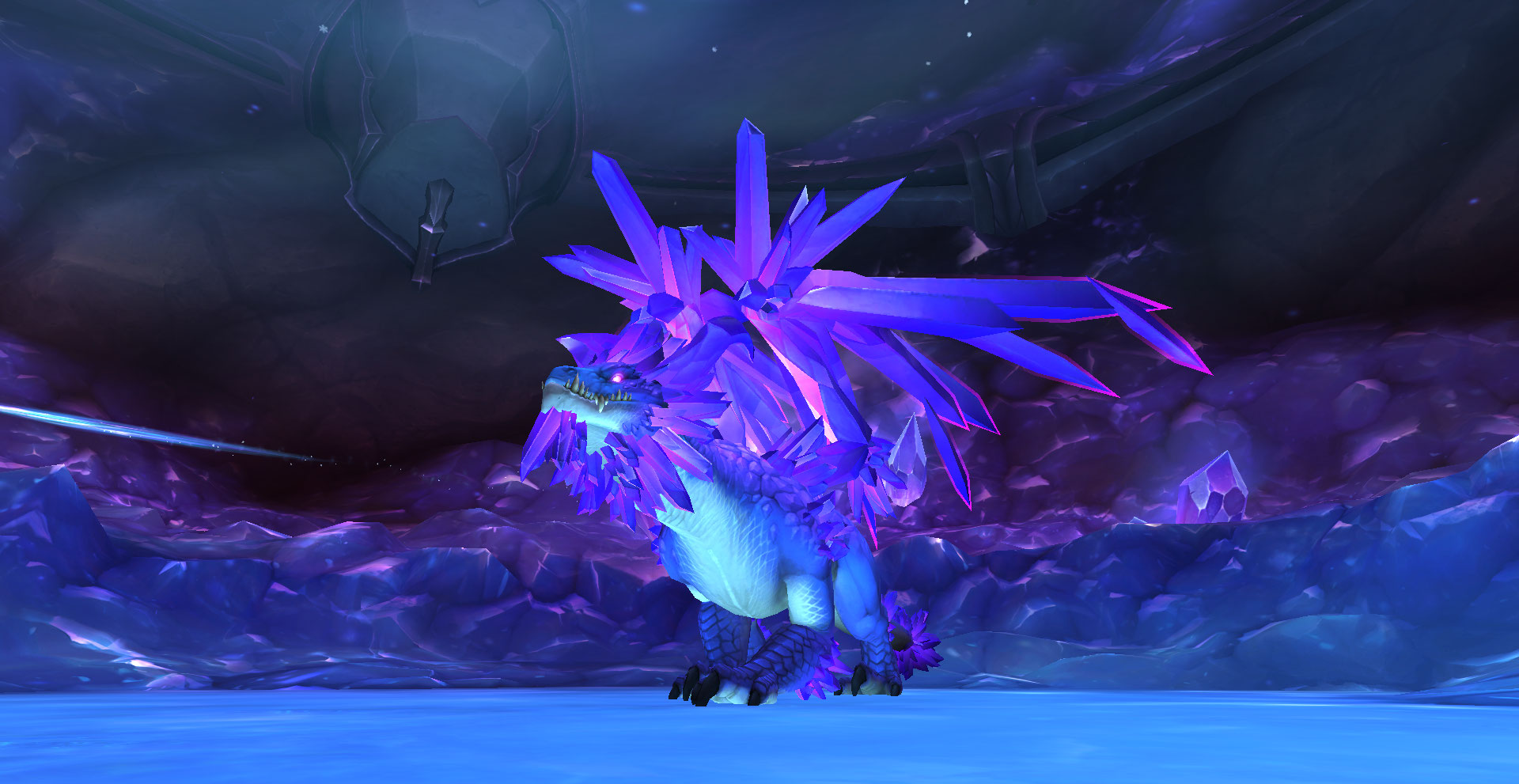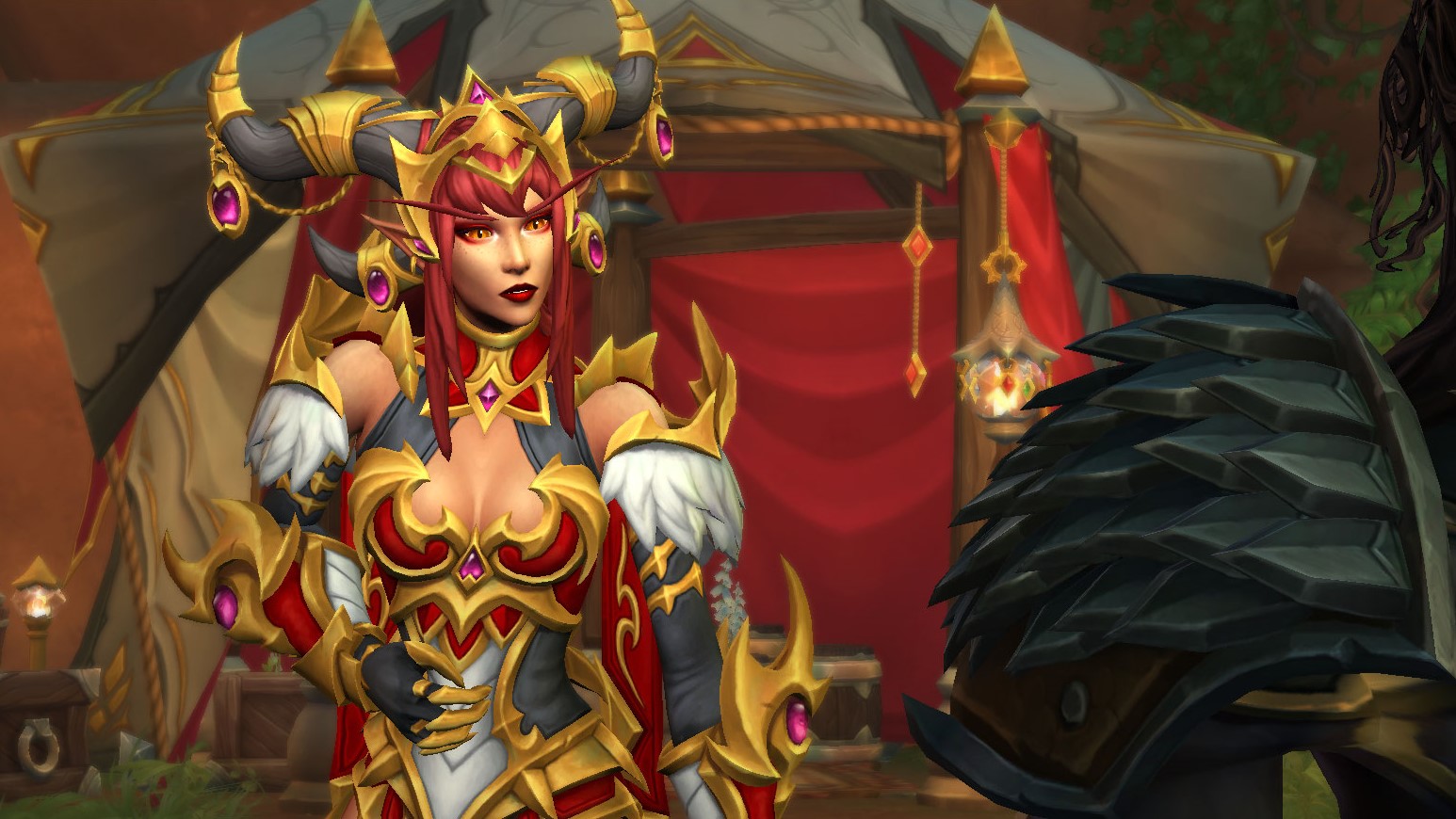Windows Central Verdict
World of Warcraft: Dragonflight is somehow a breath of fresh air and a celebration of classic design principles in equal measure. The return to more dynamic, old-school talent trees enhances the class fantasy with a seasoning of new abilities across the board. At the same time, the retreat of pressuring, artificial power-gating systems promotes a more healthy gameplay loop. The game is also gorgeous, with a more promising storyline, elevated cinematic delivery mechanics, and deeper core systems which make for one of WoW's best expansions in years.
Pros
- +
Granular class talent trees allow for deeper gameplay customization
- +
Elevated core systems offer alternative, meaningful progression tracks
- +
Sublime art direction and music
- +
Some great cinematic beats with intimate personal stories
- +
An increased willingness to fix class balance issues mid-expansion
Cons
- -
The new player experience is still truly horrible and isn't healthy for the game
- -
Not a fan of seasonal re-use of old, tired dungeons
Why you can trust Windows Central
World of Warcraft: Dragonflight has been out for a few weeks as of writing, and given the absolutely mammoth nature of this vast game, it has taken me this long to feel like I'd fully explored everything Dragonflight has to offer.
Indeed, WoW is well-known at this point for its massive expansion drops, which add entire continents' worth of new content to explore. WoW has been on something of a downward trajectory in recent years, though, with an emphasis on Battle Pass-like progression mechanics and artificial time-gating borrowed from Activision's mobile games. A significant backlash and drop-off in subscribers seems to have worked to convince the suits that it was a bad idea, thankfully. As such, Dragonflight feels very much like a fan's expansion, full of design direction that people actually want, rather than shareholders — ironically growing the game in the process.
Whoever is to blame for the previous two WoW expansions, it's all very much in the past now, figuratively and quite literally. Dragonflight is the first WoW expansion with a significant time skip for the story, which is symbolic of what feels like a new beginning for the aging MMO. Dragonflight feels full of freshness while simultaneously borrowing heavily from the tried-and-tested design principles of the past.
The result is a beautiful return to form for Blizzard, giving this similarly aging WoW veteran more hope for the franchise's future than I've had in years. Should you play World of Warcraft in 2023? The answer is yes — with caveats. But one thing is certain: WoW has reclaimed its place among the best PC games of all time.
WoW: Dragonflight review — Story
As mentioned, World of Warcraft: Dragonflight features something of a time skip. The game takes place three years after the events of Shadowlands, which drew widespread ridicule for its half-baked villain and plot threads that undermine some of Warcraft's established lore, dating all the way back to Warcraft 3. We still don't fully understand "The Jailer" and its motivations, nor do we understand why so-called master-tactician Sylvanas was so ready and willing to commit Night Elf genocide without having a full grasp of The Jailer's plan. In any case, it seems Blizzard was keen to draw a line under Shadowlands and move away from it as rapidly as possible. And praise the void, it has worked to tremendous effect.
Dragonflight is set on a new Azerothian continent dubbed The Dragon Isles, rumored and prototyped since Warcraft's inception. The Dragon Isles have been fleshed out fully and represent the site where the alien Titans bestowed their magical power on primordial proto-drakes, transforming them into graceful dragons. Unbeknownst to the mortal races, The Dragon Isles were somewhat subject to a civil war, with some drakes rejecting the Titan's "gifts." Those very proto-drakes, known as the Prime Incarnates, were defeated and sealed in a magical prison for millennia. Only now, they have been unleashed.
Dragonflight gives us a more intimate, personable tale that casts off the apocalyptic world-eating threats of the past several expansions to deal with smaller-scale conflicts. The Prime Incarnates are still a major threat, but it's a far cry from The Jailer's goal of literally rebooting reality for reasons unestablished, and it feels more grounded and immersive as a result. We know who the wonderfully-voiced and uniquely-designed Raszageth is and what her goals are. Raszageth herself sadly exits stage left before we get beyond a mere surface-level understanding of her character, but the sense of foreboding for her more powerful elder brethren, notably Iridikron, is palpable — delivered through elevated cinematics with more expressive characters.
All the latest news, reviews, and guides for Windows and Xbox diehards.
In expansions past, it was all voice work doing the heavy lifting in Warcraft's cinematics, but with new tech, characters like the Dragon Queen Alexstrasza are far more emotive, adding weight to character motivations and story delivery.
Beyond the grand, main story arc, Dragonflight has delighted me with smaller story beats in side-quests and mini-events. One quest followed an aging Warcraft II Dragonmaw clan orc, recalling memories from established lore about how his clan subjugated the red dragonflight. Despite his clan's crimes, the red dragons still welcomed him to the Dragon Isles with open arms and even treated his ailments. The reds are charged with stewardship over all life on Azeroth, and there are some great insights in this very small quest into how the orc clans have evolved as a society over time. It's also the only quest in Warcraft history to make me teary-eyed. I play WoW to get epic loot generally, but, damn it, Blizzard made me feel feelings.
We won't know for sure if Dragonflight's story will be loved or loathed until it draws to its conclusion over the next couple of years, but this willingness to offer more delicate storytelling made me feel more invested in a single side-quest than the entirety of Shadowlands' main story arc. I am excited for where Dragonflight could go, and that's a far cry from my feelings about Shadowlands.
Another big part of that sense of investment is the setting and the art direction, which heavily compliments the verticality of Dragonriding and becomes a character in its own right.
WoW: Dragonflight review — Art direction
One area Blizzard almost always succeeds in is the game's world design, and Dragonflight is absolutely no exception. In fact, I'd go as far to say as Dragonflight has some of the best and most consistent environmental direction in WoW history, and it makes returning to some of the game's older, outdated areas utterly painful.
World of Warcraft: Dragonflight's major expansion feature is Dragonriding, which allows players to soar with more dynamic flying controls that offer a more physics-based feel. As an expansion that offers flying right from the outset, Blizzard had to bring fresh design ideas to the table, building a world that has as much physical depth as it has breadth. The towering spires of the Waking Shores offer a vision of what classic zone Thousand Needles might look like with a major update, with winding gorges buttressed by a gigantic waterfall separating it from the vast pastures of the Ohn'ahran Plains.
While there are physically fewer zones than usual, each is absolutely vast and features multiple biomes. Thick forests of the Azure Span coalesce into stunning glaciers that evoke Winterspring, and fall into sickly decayed woods of Brackenhide Hollow, which reminisce of Felwood.
The game has picked up some new techniques that enhance visuals too. Raytraced shadows are in, for those with a rig powerful enough for it. Blizzard has also implemented AMD FidelityFX and NVIDIA DLSS for those who like using it. WoW isn't the most graphically intensive game in the universe, however, and will run on even modest budget gaming PCs fairly well.
Indeed, it's not lost on me how much Dragonflight seems inspired by expansions past, at least superficially. A recurring theme of Dragonflight is that of renewal. I won't spoil the story, but there are major plot threads that revolve around the Azerothian dragonflights renewing their vows to defend the mortal races and shed the corruption that has plagued some of the flights for hundreds of years in some cases.
This theme permeates through the game's design almost in its entirety, to some degree, coalescing in what feels like a love letter to the game's fans and the legacy of World of Warcraft itself.
WoW: Dragonflight review — Gameplay & systems
World of Warcraft: Dragonflight is a marked departure from the design ethos established during Legion a few years ago. Blizzard tasked themselves with figuring out systems that would add meaningful features to classes expansion over expansion, without leading to massive ability bloat. WoW is already pretty taxing compared to some other MMOs, with some specializations needing anywhere between 10 and 20 plus key binds to play optimally. Multiply that by 18 years' worth of expansions, and that can lead to significant ability bloat. Blizzard opted for a system referred to as borrowed power, which typically revolves around expansion-only features that disappear between updates, replaced by new ones.
The borrowed power design was fun initially, but it got stale quickly, especially knowing everything you'd earned in that expansion was essentially destined to be wiped. Somewhere along the line, Blizzard must have realized that the transitory feelings of previous expansions was unhealthy for the game because Dragonflight is all about permanent rewards and core systems.
The biggest aspect of this, for me, is the reintroduction of talent trees. Blizzard pruned talent trees to a simplified ability-swap system that ripped the flavor out of classes and harmed the game's sense of player growth. After the success of WoW: Classic, it seems Blizzard has realized that the old way was simply better, and the flexibility afforded by the new system is as fun as it is diverse.
You can set up and share talent builds on the fly with a text string, making it easy to set up pre-set builds for different types of content. You are given a lot of granular control over how your class plays, and can very rapidly tailor builds to maximize your effectiveness regardless of what content you're digesting. You could even go as far as to tailor builds for specific raid bosses. The talent trees were also a great excuse to bring back fan-favorite abilities and spells from previous expansions, and practically every class got something new and fun to play with.
Perhaps my favorite aspect of Blizzard's new design philosophy is just how rapidly they're performing tweaks, fixes, and even revamps. I went literally entire expansions with interesting abilities rendered completely useless by a lack of interest from Blizzard in doing mid-expansion balance tweaks. The pace of updates has been far more palatable this time, with classes getting buffs or nerfs based on prevailing trends almost on a fortnightly basis. Retribution Paladins for example are getting almost a full overhaul to add some dynamism and additional tools to the class' playstyle and fantasy, which is great to see. Previously, Blizzard waited for entire expansions to pass before doing these kinds of revamps.
It's perhaps fortunate that Blizzard is paying more attention to balance during the expansion this time around, given that they added an entirely new class into the mix in the form of the Dracthyr Evoker. These lithe lizard-like drakonids are the creations of Deathwing, sent into slumber for millennia. Now awoken, they've taken up their charge to defend the Dragon Isles from the Primalists, teaming up with the player to do so. The design of the Dracthyr is subject to debate, with some saying they look too weedy when compared to some of their beefier drakonid cousins. They are casters in essence, using breath attacks and dragon powers to heal friends or damage foes. I find them to be quite fun to play, with their winged mobility powers giving them a huge degree of freedom on the battlefield. I'm not a fan of their design visually, though, and the fact that they get very little armor designs to choose from is a bit of a disappointment. I suspect Blizzard will give the Dracthyr more capabilities in subsequent patches throughout this expansion, though.
Another improvement in Blizzard's design philosophy pertains to endgame content in general. The few most recent expansions put far too much emphasis on artificial time-gating or time-sensitive mechanics, which contributed to this feeling that WoW had become a choring job.
For this expansion, Blizzard relented on some of these artificial systems designed entirely for engagement metrics padding and focused on creating a variety of fun content backed with cosmetic or convenience rewards instead of power progression. As a result, I ironically feel more motivated to log on and "pad those engagement metrics," because there's just less pressure to log on in the first place. The new professional systems offer the kind of depth I like, and although they have a lot of room for improvement, they've become deep enough to offer additional meaningful progression beyond the gear grind. And it's that gear grind really that keeps players coming back, month after month, year after year. So how are dungeons and raids these days?
The core endgame gameplay loop remains unchanged mainly in Dragonflight, and perhaps that's a good thing since it's one of the game's strongest aspects. There are still some annoying affix combos in Mythic+ dungeons. These affixes are modifiers that add additional dimensions of difficulty to end-game 5-player dungeon runs. In higher-level M+ keys, these affixes can interact in incredibly irritating ways at times, to the point where class imbalances become more apparent.
Blizzard has shown more willingness to tune around higher-level play, though, so that every playstyle has a chance to reach keystone master seasonal rankings or perhaps even higher. The dungeon designs are great too. A personal favorite is the excellent Nokhud Assault dungeon which takes place across the entire zone, carried by your dragonriding drakes. Veterans will remember the last time Blizzard tried something like this with the much-hated Oculus dungeon. Over a decade later, we can see how much the tech has advanced to make mounting in-dungeon feel much better. I also really enjoyed the Azure Vault dungeon, which is a forgotten library of magical apocrypha. Led by none other than an arcane simulacrum of the very dead dragon Sindragosa, this dungeon ends in a battle with a demented, crystal-wracked dragon whose piercing howls of pain are among some of Warcraft's most haunting.
However, I'm not a fan of Blizzard's decision to pull old dungeons into the current seasons. There are a bunch of new dungeons in Dragonflight that I've barely touched because Blizzard has arbitrarily removed them from the season pool. Personally speaking, I don't want to run old dungeons anymore, although that is indeed a personal preference.
The raid is the centerpiece of any endgame season, and Dragonflight Season 1 gives us Vault of the Incarnates. It's yet another Titan facility taken over by a rogue force, namely Razsageth and her cultist lackeys. Why mortal races keep throwing in en masse with apocalyptic entities is one of World of Warcraft's biggest mysteries, but, here we are.
The design of the raid itself isn't too mystifying, but it has some fun scenery and boss battles. The opening to the big raid is ablaze with lava giants, evoking nostalgic feelings of Molten Core. Then we wind through elemental-imbued halls, doing battle with a giant frost-spider, a hulking earth elemental, and several other lava-endowed horrors. The raid is a little on the pedestrian side, I feel, culminating in a tough battle with the lightning-spewing proto-drake Razsageth. However, I can't see it being remembered as fondly as something like Ulduar or Naxxramas. I would like Blizzard to try a little harder in this regard. The mechanics are fun and unique, but a lot of the models we see in raids are reused skeletons from bosses we've killed a thousand times, and it's really starting to drag.
Another aspect of Dragonflight that I would like to see Blizzard try harder with is the new-player experience. The health of any service game has to revolve around its onboarding process for new generations of players, as veterans drop off the game due to fatigue or real-life things. I would argue that World of Warcraft has the worst new player experience of any service game in history for its size. The band-aid that is "Exiles' Reach" dumps players into a random point in the game's story lore and then spews them into Battle for Azeroth, right into dungeons with advanced mechanics. If you're a solo player, you simply have no chance, as tolerance for even the most minuscule of newcomer mistakes is absolutely minimum in this game. I've long, long argued that Blizzard needs to do another Cataclysm-style revamp of Azeroth, with low-scale threats that can exist in a lore-agnostic vacuum, to anchor players in the game RPG fantasy and its mechanics. Dragonflight offers no improvements whatsoever for the new player experience, and that's a shame.
Overall though, and particularly for returning players, Dragonflight is the healthiest the game has been in years. The variety of endgame activities beyond simply dungoneering is really refreshing, and there's enough new content for every class and profession to keep you busy, regardless of how hardcore you want to play. I'm impressed that Blizzard was able to shed some of its ingrained design direction and learn from the past to build something new.
WoW: Dragonflight review — Final thoughts
World of Warcraft is a legendary game, and as someone who has been playing it since launch, it's kind of wild to see how it has evolved over time. The entire video game industry has changed since the game launched, and the fact Blizzard manages to keep WoW current is a testament to the developers, artists, and its community as well.
World of Warcraft: Dragonflight represents something of a new direction ethos for Blizzard, and from its first iteration, it's a breath of fresh air. The emphasis on variety and low-pressure progression fun is welcomed, as permanent new additions like boosted professions and a revamped UI system.
World of Warcraft has a mountain of legacy content that is in desperate need of a revamp, most pressing of all being the new-player experience, which remains awful in Dragonflight. I would argue Blizzard's PvP systems also need a deeper look too, although the itemization has improved this time around. Either way, veterans will find a lot to love on the Dragon Isles, with literal mountains of new content, new stories, and new gear to discover.
If you're a weary vet who has wondered when the right time to return to Azeroth might be, I would say now is better than ever. If you're a curious newbie wondering what all the fuss is about, I'd argue that Dragonflight still isn't a great starting point. It is a great starting point for the future of the game, though, with a new design ethos that will lead to a healthier service for fans of all types of playstyles.
World of Warcraft: Dragonflight ($60)
Dragonflight is a return to form for Blizzard. With the pandemic in the rear view mirror, Blizzard has focused on being fun-first, rather than engagement-first this expansion around, creating a game that will satisfy all types of players. Unless you're a newcomer, that is.
See at: Battle.net

Jez Corden is the Executive Editor at Windows Central, focusing primarily on all things Xbox and gaming. Jez is known for breaking exclusive news and analysis as relates to the Microsoft ecosystem while being powered by tea. Follow on Twitter (X) and tune in to the XB2 Podcast, all about, you guessed it, Xbox!




